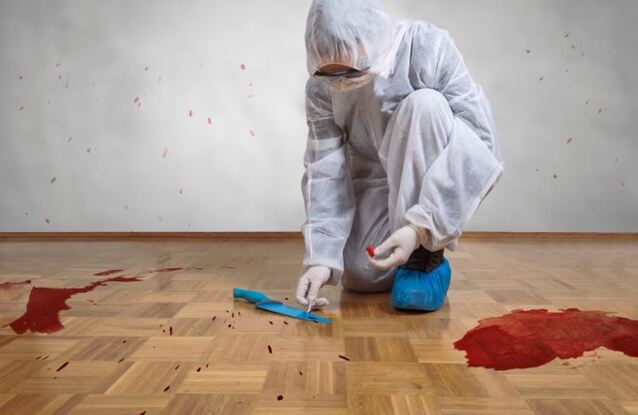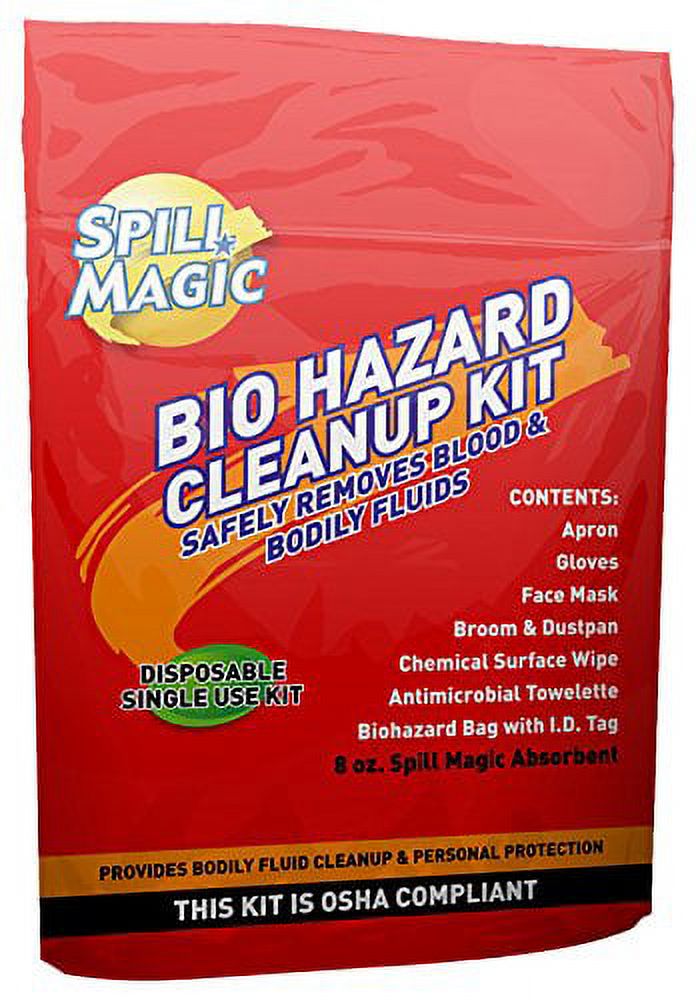Biohazard Removal: Safe Handling and Disposal of Hazardous Products
Biohazard Removal: Safe Handling and Disposal of Hazardous Products
Blog Article
Professional Biohazard Cleansing and Purification for Blood, Bodily Fluids, and Hazardous Products
The prospective health dangers associated with direct exposure to biohazards underscore the important need for thorough handling and extensive cleaning. As we navigate the detailed landscape of biohazard cleanup, recognizing the nuances of guidelines, conformity, and the specific tools at play becomes critical in guaranteeing a secure and comprehensive decontamination procedure.
Health Dangers of Biohazard Direct Exposure
Direct exposure to biohazards poses considerable wellness risks that can result in serious effects for individuals and communities alike. Biohazards incorporate a broad range of biological substances, including blood, bodily fluids, mold, bacteria, infections, and various other possibly infectious materials. When individuals enter into call with these biohazards, whether via accidents, improper handling, or environmental exposure, they deal with the danger of having serious diseases or illness.
Among the main wellness threats related to biohazard direct exposure is the transmission of transmittable conditions. Bloodborne pathogens such as HIV, liver disease B and C, and different bacteria can be present in biohazardous products, posing a direct threat to human health. Breathing in air-borne biohazards like mold and mildew spores or entering call with polluted surfaces can likewise result in respiratory issues, allergies, and various other damaging wellness impacts.
Moreover, biohazard exposure can have long-term health effects, with some conditions materializing years after the preliminary contact (Blood Cleanup). Therefore, it is crucial to focus on appropriate biohazard cleaning and decontamination to minimize these health and wellness dangers and ensure the safety and security of people and neighborhoods

Specialized Training for Biohazard Clean-up
When it comes to managing biohazard cleanup effectively and securely, specialized training plays a fundamental duty in ensuring appropriate purification procedures are adhered to. Biohazard cleanup needs details knowledge and abilities to effectively reduce threats related to bloodborne microorganisms, physical liquids, and hazardous materials. Specialists learnt biohazard cleanup go through strenuous guideline on how to safely manage, get rid of, and get rid of biohazardous products to protect against contamination and exposure.
Specialized training for biohazard clean-up covers a series of crucial topics, including appropriate personal safety tools (PPE) use, bloodborne pathogen awareness, decontamination methods, and harmful waste disposal methods. People learnt biohazard cleaning are equipped with the necessary competence to examine contamination degrees, recognize possible threats, and apply appropriate cleaning treatments in conformity with governing criteria.
Continual training and education and learning are vital in the area of biohazard clean-up to stay updated on the current decontamination technologies, safety and security methods, and laws. By spending in specialized training, biohazard clean-up experts can efficiently react to emergency situation cleaning circumstances and protect both public health and the environment.
Relevance of Correct Decontamination Methods
Using proper purification methods is essential in biohazard cleaning to properly remove unsafe materials and minimize health and wellness risks. Reliable purification not only makes certain the removal of noticeable traces of blood, physical fluids, and various other biohazards but additionally targets undetectable pathogens that might position significant health and wellness threats otherwise correctly gotten rid of. By complying with rigorous decontamination methods, trained specialists can dramatically lower the risk of direct exposure to harmful microbes, viruses, and germs that can result in illness or infections.
Correct decontamination methods entail the use of customized equipment and disinfectants that are especially designed to try this reduce the effects of biohazards effectively. Complete cleansing and disinfection of polluted locations are vital to stop the spread of virus and ensure a risk-free setting for occupants. Additionally, the right disposal of biohazardous waste adhering to purification procedures is important in stopping contamination of various other surface areas or people.

Equipment and Tools for Safe Cleanup
When dealing with blood, physical fluids, or harmful materials, biohazard cleansing professionals count on specialized gear to decrease exposure threats and completely sanitize the afflicted location. Additionally, biohazard cleansing kits having disinfectants, absorbing materials, and biohazard bags are utilized to securely include and get rid of of contaminated products.
Advanced cleansing tools like hospital-grade anti-bacterials, HEPA-filtered vacuums, and fogging equipments are employed to sterilize surface areas and visit this page remove biohazards successfully. Specialized equipment such as sharps containers and biohazard waste disposal containers are utilized to safely handle sharp things and biohazardous waste materials. By using the appropriate equipment and tools, biohazard cleansing specialists can guarantee a detailed cleanup process that focuses on safety and security and minimizes health dangers for both employees and owners of the affected space.
Laws and Conformity in Biohazard Cleaning
Appropriate adherence to regulations and conformity criteria is paramount in biohazard cleaning to make certain the security of both workers and the environment. Government companies such as OSHA (Occupational Safety And Security and Health And Wellness Administration) and the EPA (Environmental Protection Firm) have actually developed specific standards for biohazard clean-up treatments to reduce wellness dangers and ecological contamination. These regulations cover a variety of aspects consisting of the handling, transport, and disposal of biohazardous materials, in addition to the essential training and safety devices needed for workers associated with the cleaning process.
Biohazard cleaning companies should stay updated with these regulations to assure that their procedures satisfy the required safety standards. Failing to follow these guidelines can result in severe consequences, consisting of penalties, lawful activity, and threatening the health and wellness of people and the setting. By following stringent policies and conformity measures, biohazard cleaning firms can properly minimize dangers and make sure a thorough and risk-free clean-up procedure for all parties entailed.
Verdict
To conclude, biohazard cleansing and decontamination require specialized training, proper techniques, and adherence to guidelines. Direct exposure to blood, physical fluids, and unsafe products positions substantial health threats, making it critical to utilize the right devices and tools for risk-free cleaning. By adhering to strict procedures and standards, specialists can efficiently minimize the risks connected with biohazard direct exposure and guarantee the safety of both themselves and others.
As we navigate the detailed landscape of biohazard clean-up, comprehending the nuances of guidelines, compliance, and the customized tools at play ends up being imperative in making sure a complete and safe purification process. (Blood Cleanup)
When it comes to taking care of biohazard cleaning successfully and safely, specialized training plays a basic role in guaranteeing appropriate decontamination treatments are followed.Making use of proper decontamination methods is crucial in biohazard cleanup to efficiently decrease and remove harmful products wellness threats. Furthermore, biohazard cleaning sets having disinfectants, absorptive products, and biohazard bags are made use of to securely dispose and have of polluted things.
Government agencies such as OSHA (Occupational useful source Safety And Security and Health Administration) and the EPA (Environmental Security Agency) have established certain standards for biohazard clean-up treatments to reduce health and wellness dangers and ecological contamination.
Report this page